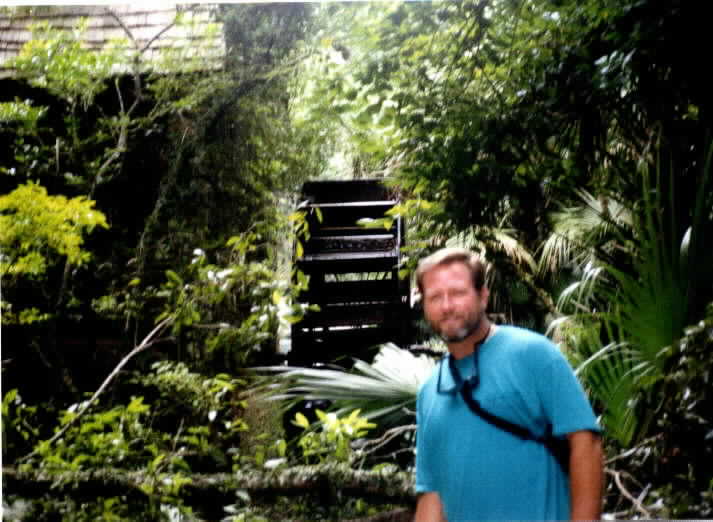|
We had a picnic lunch and then went on the 3/4 mile self-guided interpretive nature trail adjacent to Juniper Creek. We saw
many lowland hammock species such as red maple, black gum, the rare needle palm, bays, rich ferns, the crooked pond pine and
loblolly pines. Along the trail is a view of Juniper Creek. Also a well-labeled poison-sumac tree! After our hike, we had
a refreshing swim in the Spring.

Juniper Springs Wilderness and Recreation Area
Located in the Southeastern part of the Ocala National Forest, off Fla. 40, offers a full range of outdoor activities. There
are 79 campsites in three different areas of the park. More about the camping later. This began as a day trip for a picnic
outdoors at the beautiful Juniper Springs. The water is sparkling clear, cool (72 degrees year-round) and a refreshing swim.
The head spring area has swimming area, picnic facilities, and a first-rate nature trail that takes you along the pristine
spring creek run. Canoe rentals are available for the 7-mile run which lasts approx. 4 hours. We decided that the next trip
we would do that!

Adjacent to the swimming area, an old mill with a working waterwheel adds to the ambiance of the spring.

Juniper Springs, Ocala National Forest, swimming area (Head Springs)
Juniper Wilderness
The Juniper Wilderness is a designated nature wilderness. It has semi-tropical scenery not found on any other national forest
in the continental United States. The combined daily water flow from Juniper and nearby Fern Hammock Springs is about 15
million gallons per day. The exceptionally low dissolved solids concentration for a Florida Spring, these sparkling waters
rate a gold star!

What is a Springs "Boil"?
Surging from the Florida aquifer, clear, cold water literally "boils" up through the white sand. These waters fill
the Juniper and Fern Hammock Springs at an amazing rate of 15 million gallons per day. This photo shows numerous boils in
the Fern Hammock Spring which is at the end of the Juniper Nature Trail. No swimming or wading is allowed in this area to
protect the fragile eco-system. A good close-up photo of one of the spring boils follows on the Photo Pages
Did You Know?
The waters come up to the springs from the Florida Aquifer below then flow down the banks of Juniper Creek for 10 miles to
Lake George, known as the second largest lake in Florida. In reality, Lake George is a very wide portion of the St. Johns
River. The waters which leave this area contribute to the flow of the St. Johns and eventually reach the Atlantic Ocean,
playing a vital part in the balance of our environment.
|



